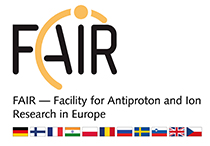Delta resonances probing nuclear structure

In high-energy heavy-ion collisions, in particular in charge-exchange reactions, there is clear evidence for Δ-resonance in nuclei. Also the three-body force in
nuclear systems could originate from Δ-resonances. The Δ-resonance is a ΔS =1; ΔI =1 spin- and isospin-flip intrinsic excitation of the nucleon. As such it is a partner of the corresponding ΔS=1; ΔI=1 excitation of the nuclear medium, known as the Gamow-Teller resonance. Studies with the Super-FRS present unique possibilities to study the Δ and other baryon resonances in stable and in exotic nuclei. Pilot experiments of isobaric charge-exchange reactions have already been performed with the FRS and reveal interesting results as demonstrated in the Figure. Heavy-ion collisions with heavy target nuclei also provide an opportunity to study two Δ’s in nuclei. It may also provide a chance to study ΔΔ interactions. The proposed experiments on Δ-excitations in exotic nuclei can be realized by using the Super-FRS with its standard tracking detector systems measuring the momentum distribution of the isobaric nuclides created via charge-exchange reactions. In addition, measuring the charged pions emitted in the decay of the nucleon resonances in coincidence will provide a clear signature for the Δ-resonance excitation. In the third stage of these studies, one could use an advanced setup providing 4ϖ detection capability with a complete tracking of all pions in the magnetic field. The proposed setups have many common issues with the ones proposed for the investigations of the η’ mesonic states and hypernuclei. Therefore, synergies should be identified in order to design a common setup. A large discovery potential,extending also to astrophysics, can be expected from studies of nucleon resonances in exotic nuclei, which were never possible in the past and will not be possible by other lower-energy facilities.

